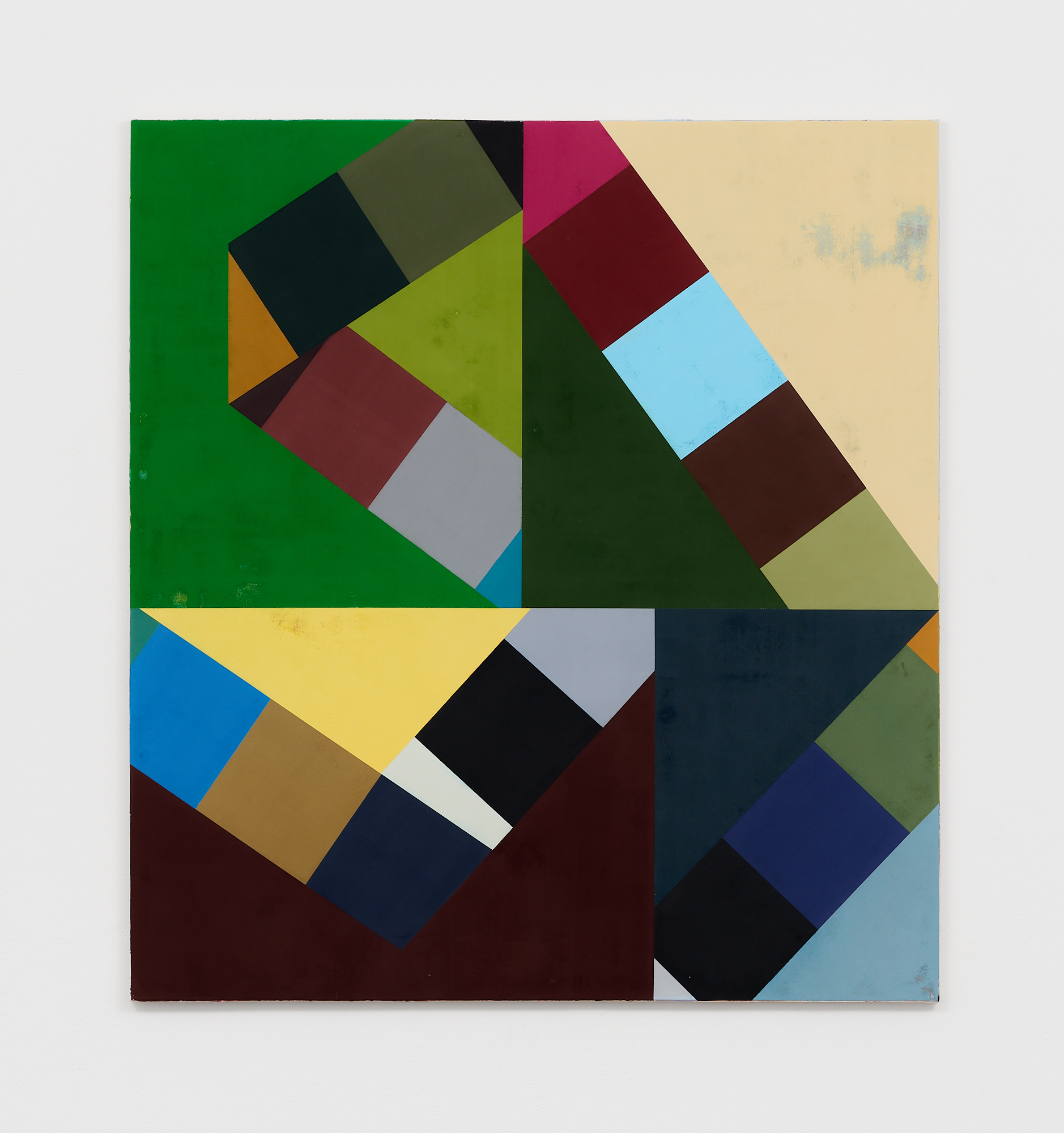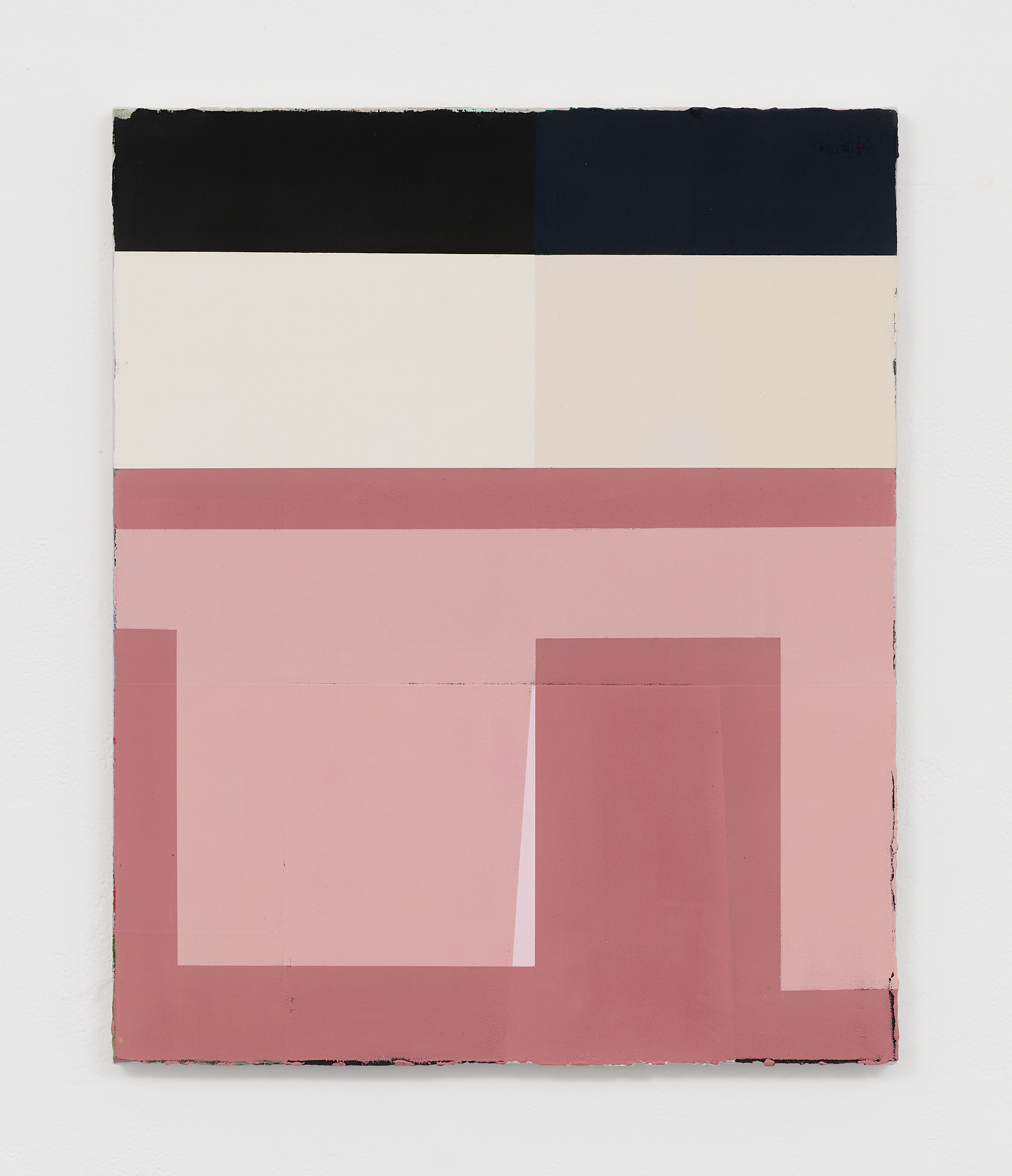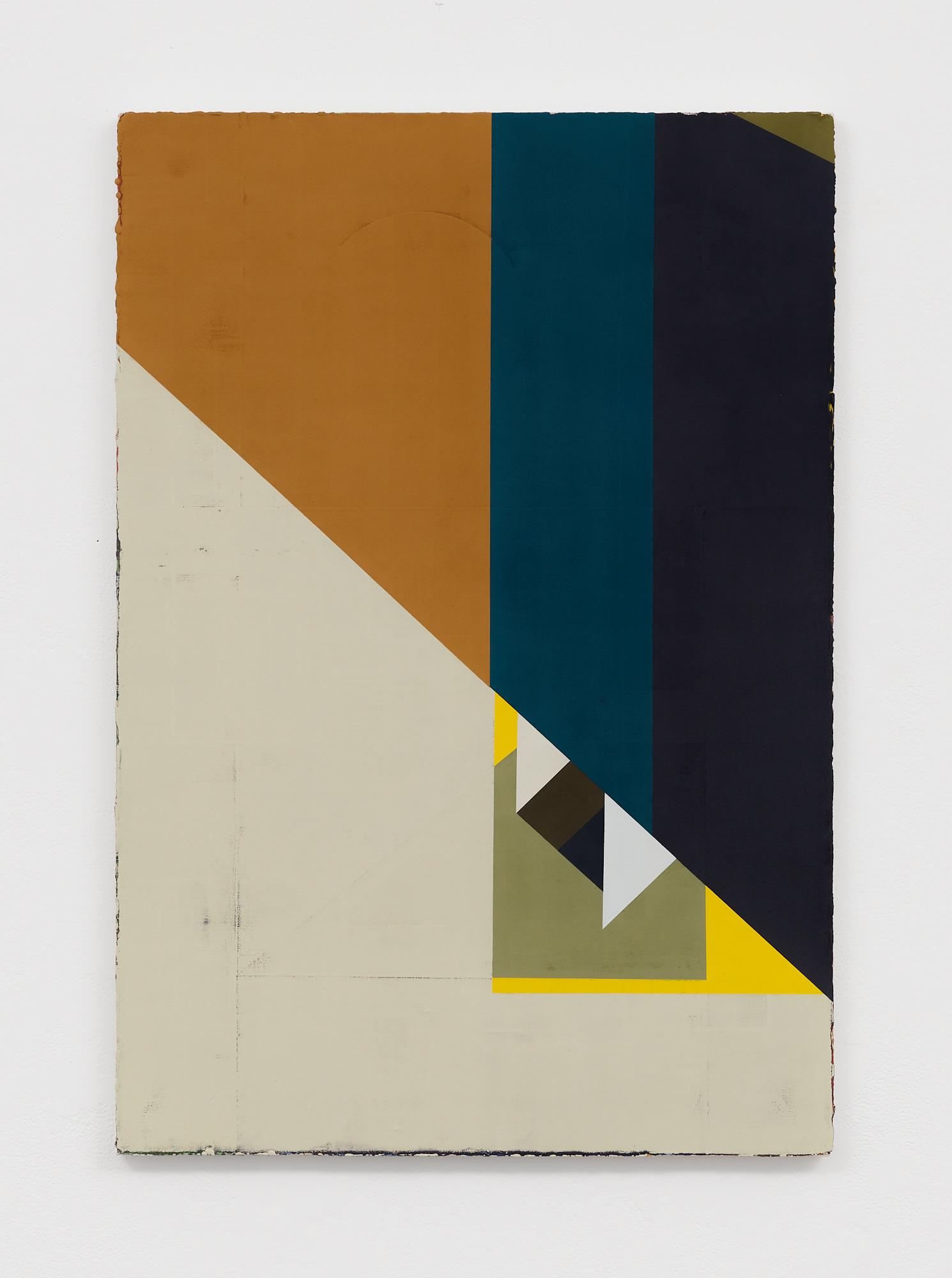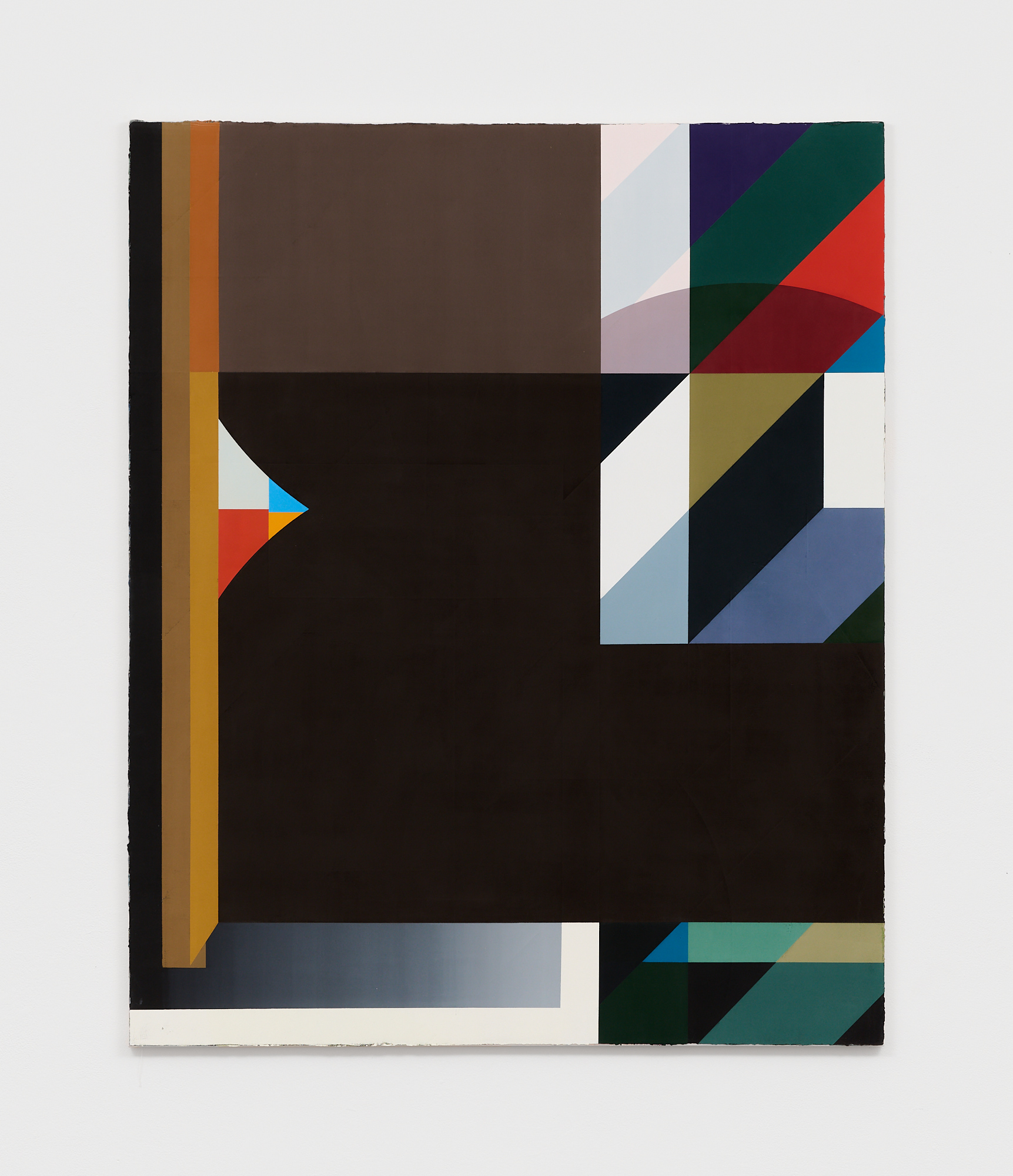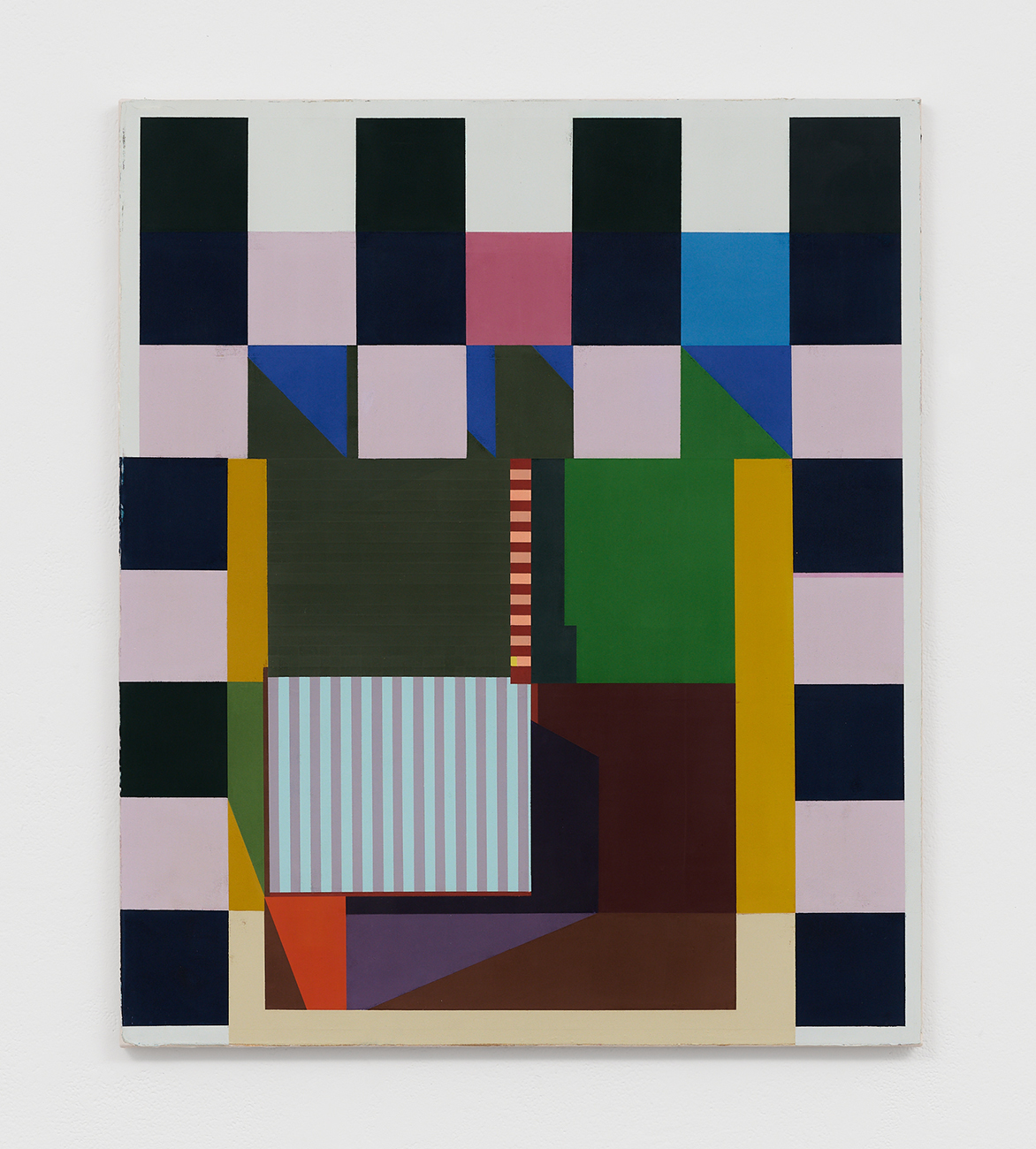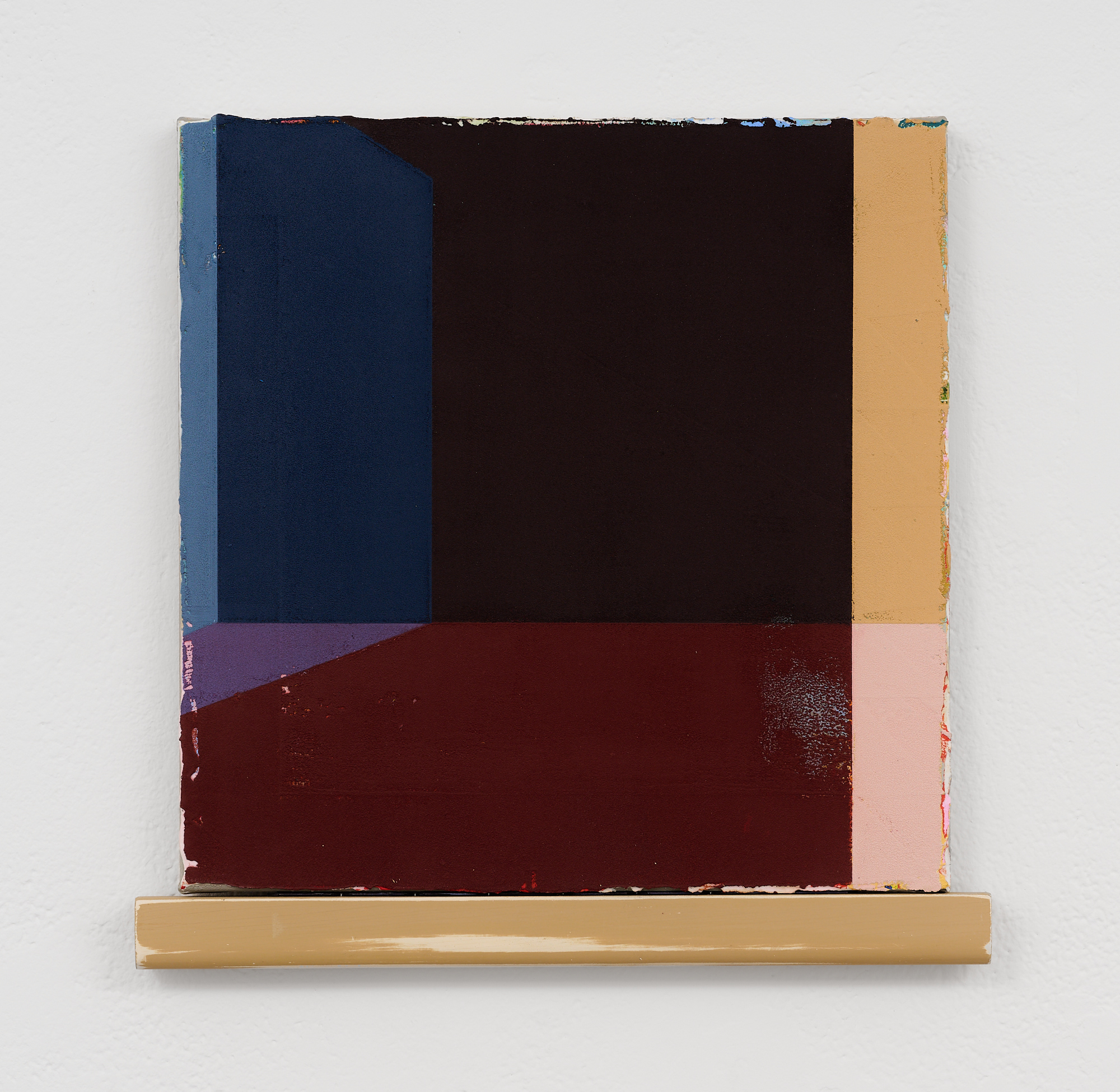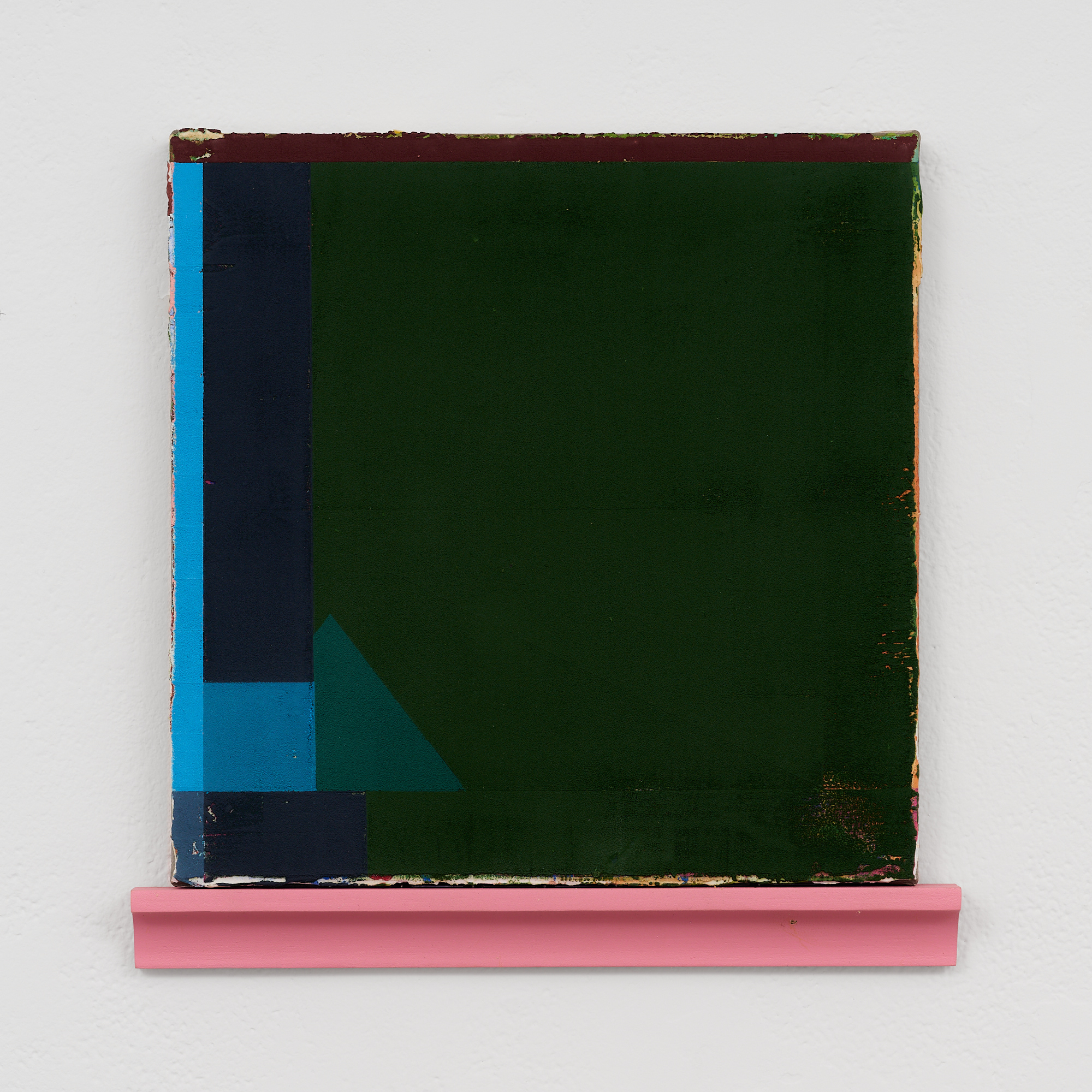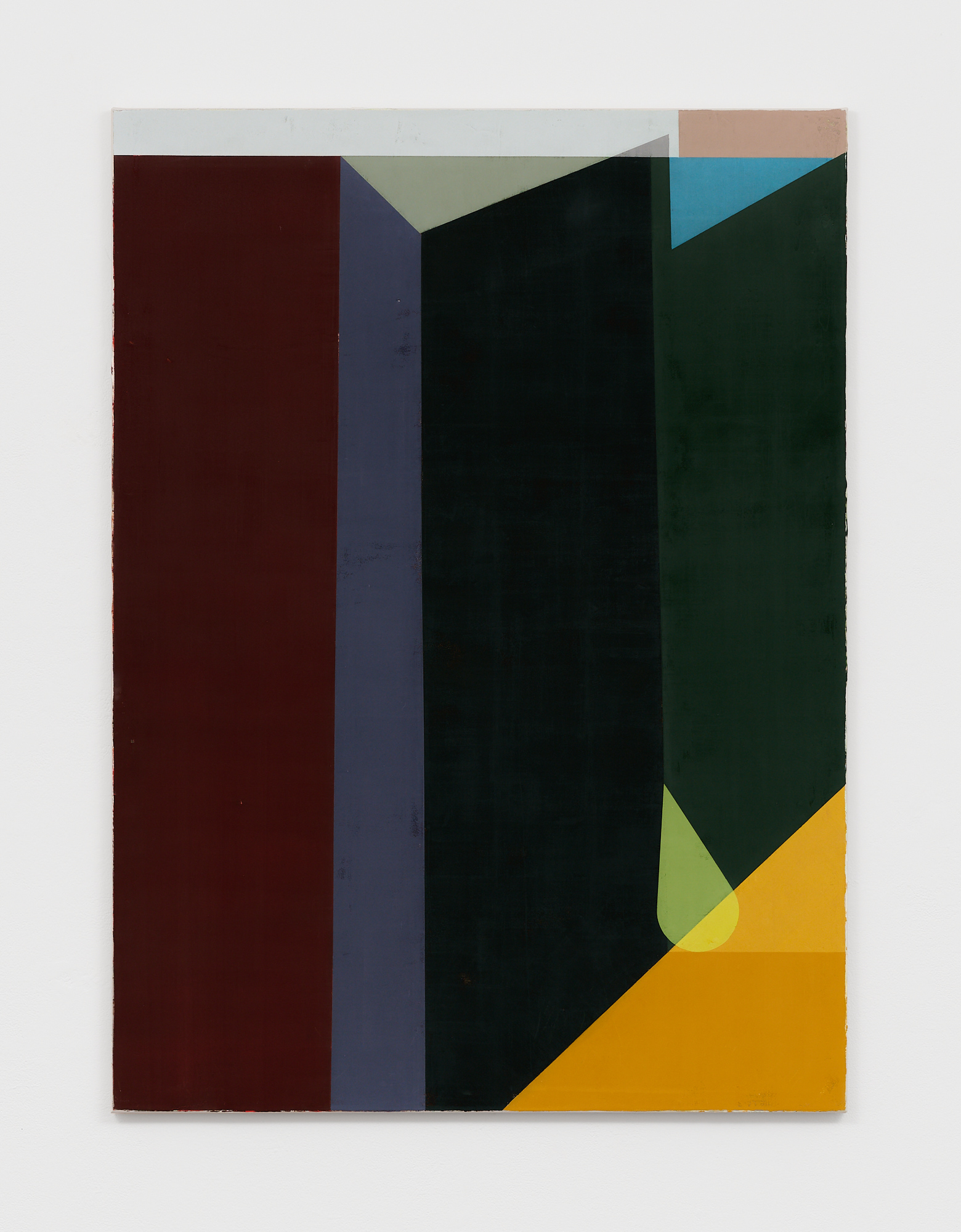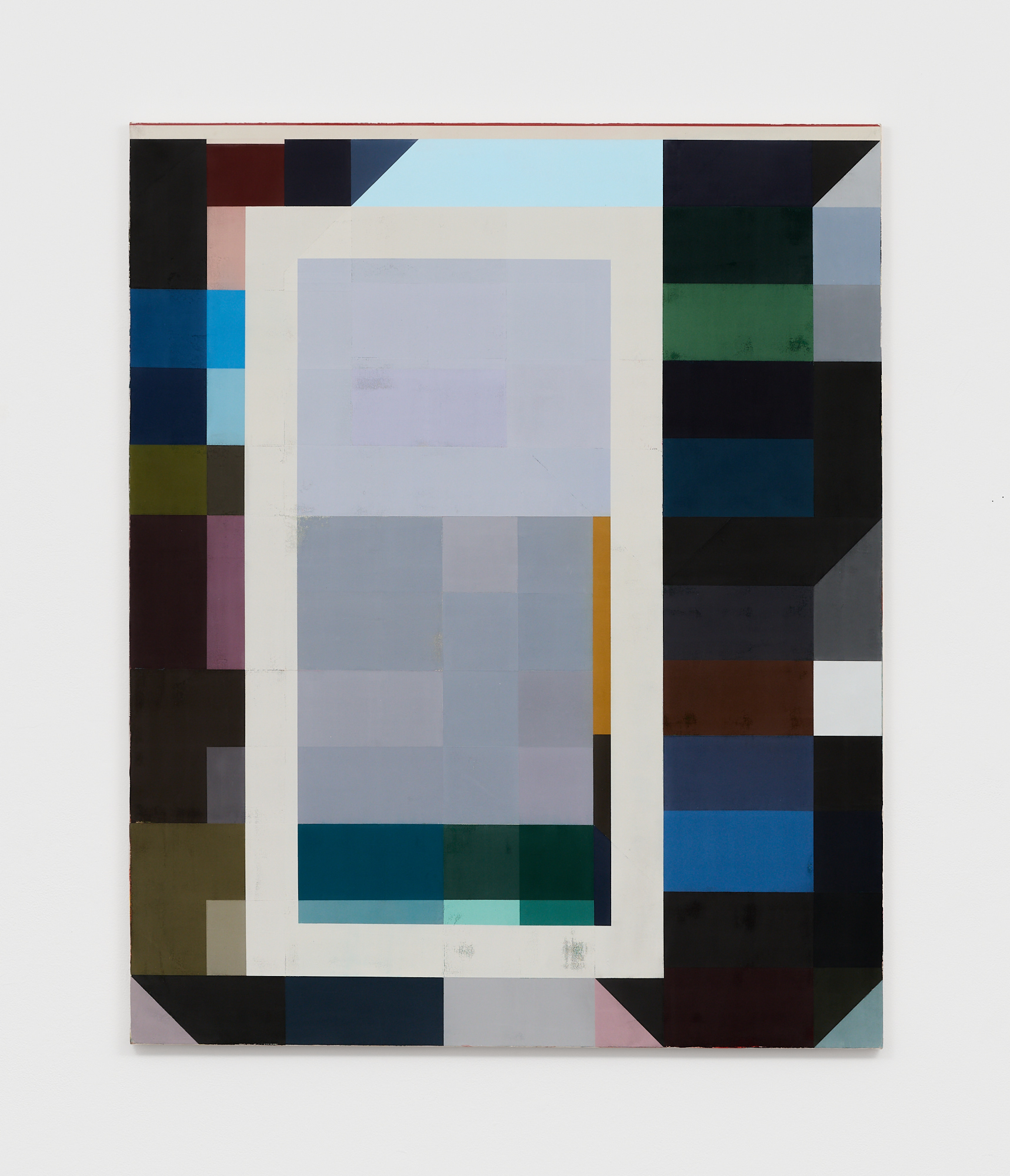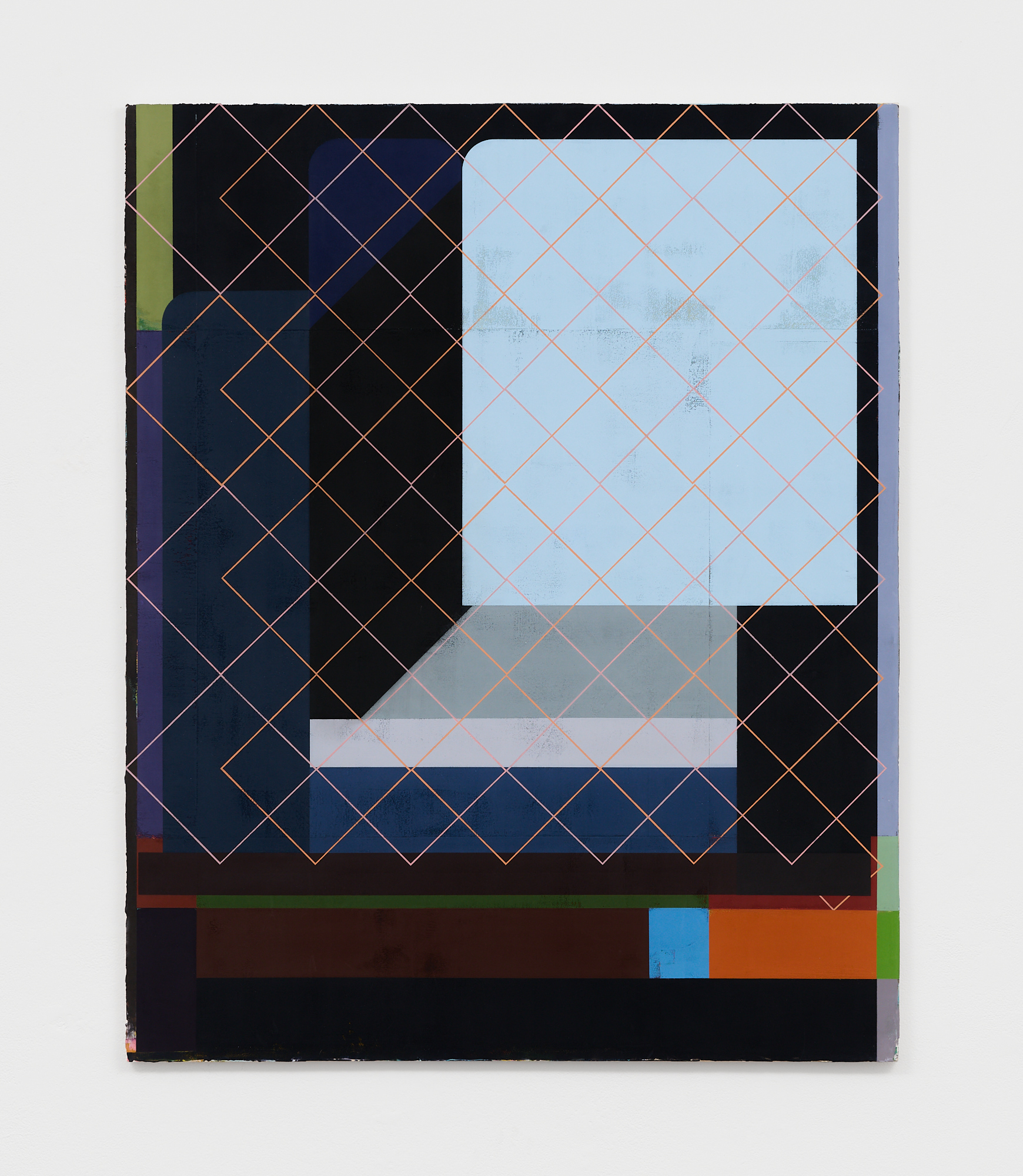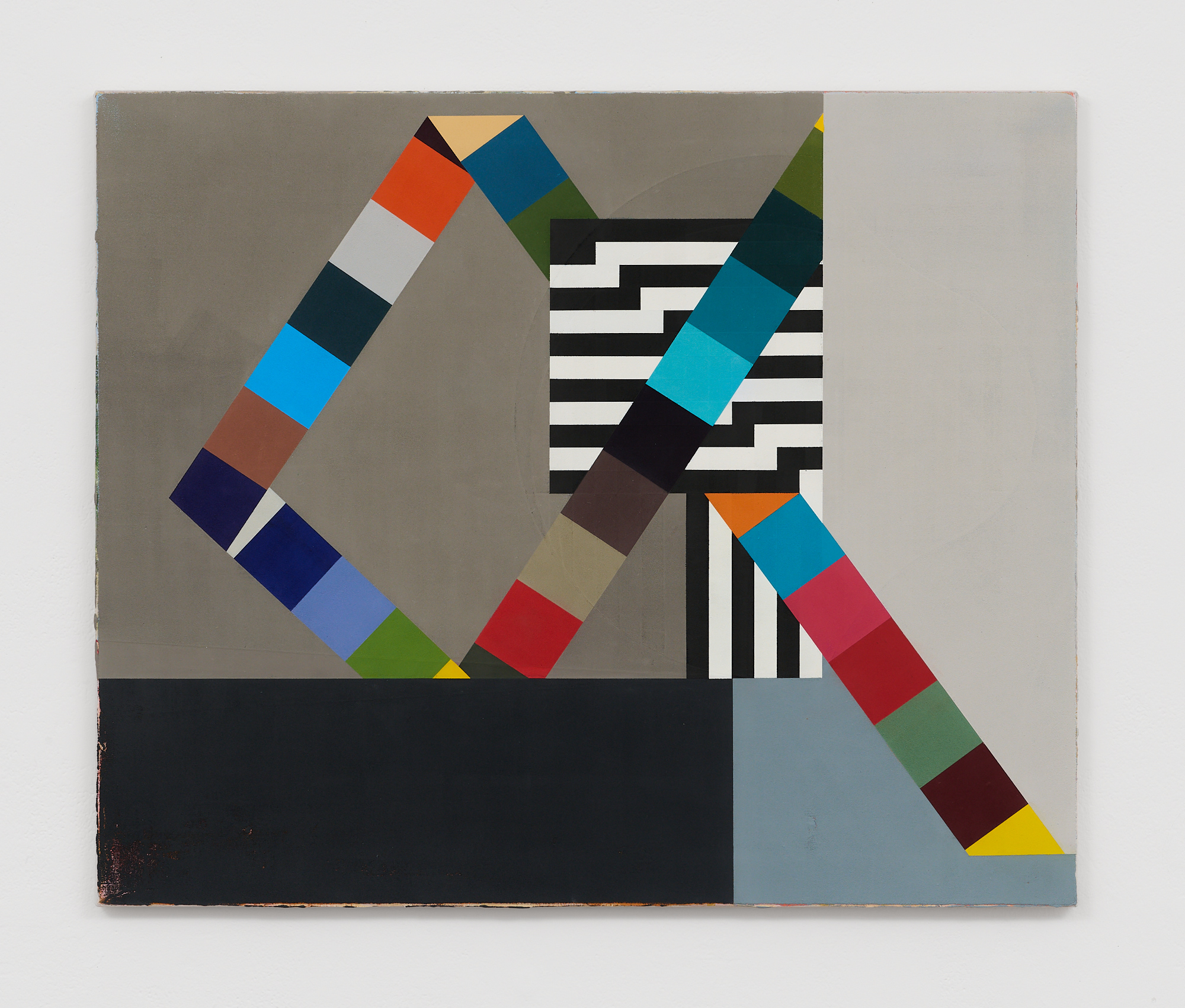TWITTERING MACHINES
MAY 31 – JUNE 22 2024. EGG & DART GALLERY, 2/175 KIERA ST, WOOLONGONG NSW
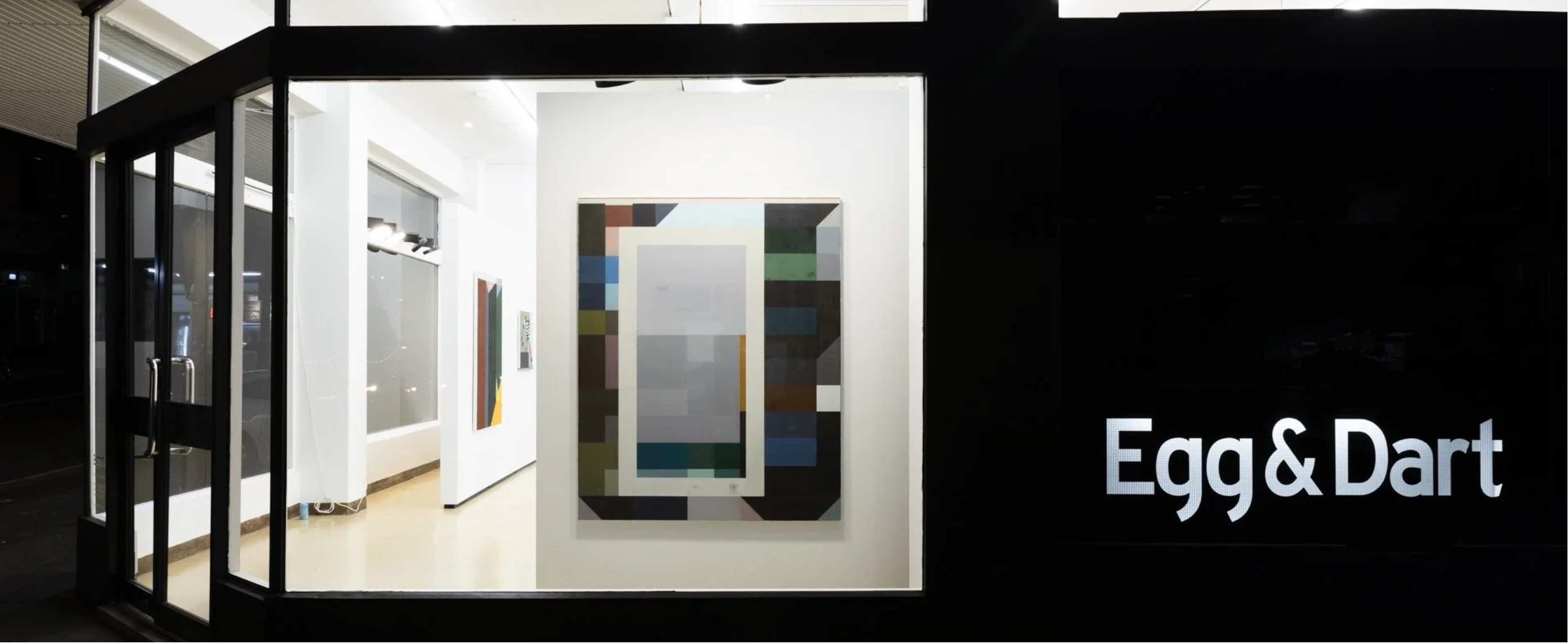
Darren Munce’s works are an encounter with visual attention and material presence, offering painted surfaces that have been willed into an open resolution. From a distance there is a deep understanding of colour explored through the arrangement of interlocking planes. On approach, great variations of texture gain clarity, the stacked and rolled application of pigment marking the time inherent in making these works. Individual paintings land with a variety of resolutions, dynamic and palpable, ever-shifting or folding through modes.
Munce likes the physical pushback of the stretched support but then coats the canvas with mediums to a smooth finish as he begins to develop forms. The depths of these surfaces, their planar shifts and careful layers are referential assemblages. We are invited to connect a form or a colour relationship with our own visual experiences, much as Munce collects references from daily life and notes them in his studio sketchbooks:
“Riding to work, I’ll see a jumper, or a shape on the ground, trousers, something. That will filter into the paintings at a point”.
The sketches may be a starting point for a new work or used to move things along when a work is at an impasse. He will call on these ideas to drive a painting forward before the visual cue shuffles back beneath the primacy of the material experience. Some works nod to pictorial modes, like ‘Giorgio’s Corner’, a smaller painting that Munce relates to an emptied-out urban street painted by the Greek Surrealist Giorgio de Chirico. All these references land lightly enough that they can remain optional pathways through a work.
Munce likes the physical pushback of the stretched support but then coats the canvas with mediums to a smooth finish as he begins to develop forms. The depths of these surfaces, their planar shifts and careful layers are referential assemblages. We are invited to connect a form or a colour relationship with our own visual experiences, much as Munce collects references from daily life and notes them in his studio sketchbooks:
“Riding to work, I’ll see a jumper, or a shape on the ground, trousers, something. That will filter into the paintings at a point”.
The sketches may be a starting point for a new work or used to move things along when a work is at an impasse. He will call on these ideas to drive a painting forward before the visual cue shuffles back beneath the primacy of the material experience. Some works nod to pictorial modes, like ‘Giorgio’s Corner’, a smaller painting that Munce relates to an emptied-out urban street painted by the Greek Surrealist Giorgio de Chirico. All these references land lightly enough that they can remain optional pathways through a work.
text by Melody Willis
